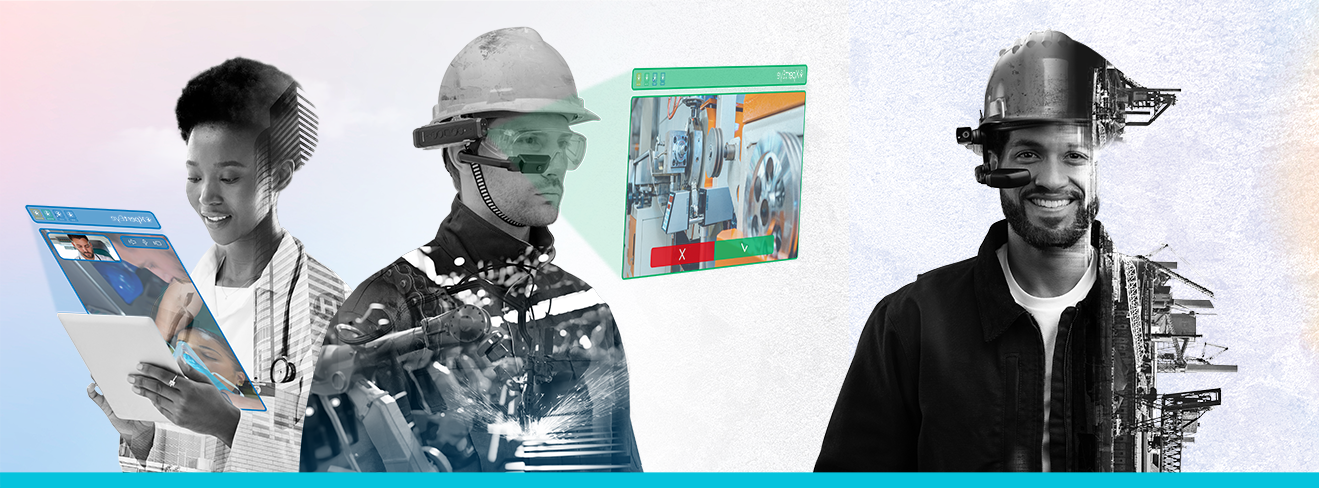Unlike desk-based workers, frontline workers are typically mobile throughout the day, facing a range of unique challenges. The deskless workforce plays a vital role in various industries including healthcare, agriculture, transportation, retail, and manufacturing. Their roles encompass paramedics, doctors, nurses, firefighters, emergency dispatchers, maintenance workers, factory workers, assembly line workers, utility workers, and more. This article explores the top 5 challenges faced by frontline workers and presents their corresponding solutions.
Challenge 1: Inadequate training and support
Inefficient onboarding and training contribute to a high turnover rate within this distributed workforce.
Insufficient training can hinder frontline workers from performing their tasks effectively. This can result in errors, reduced productivity, and decreased customer satisfaction.
Solution: Modernize and prioritize employee training

Companies should provide relevant training programs and tools to empower frontline workers, helping them maintain expertise and a competitive edge. For instance, digital tools can bridge the skill gap between experienced workers and newcomers by making digital work instructions and checklists readily available. Another example can be speeding up knowledge acquisition of new workers by capturing expert experience through video and sharing it with trainees later.

|
Challenge 2: Inadequate funding and investment in technology
A 2020 study conducted by the Harvard Business Review (HBR) found that 43% of respondents identified the cost of implementing digital technologies as a major barrier to empowering frontline employees.
The lack of financial resources hampers the frontline workers’ access to the necessary training and modern tools. Outdated tools, insufficient training, and limited access to up-to-date information can slow down processes, diminish productivity, and create frustration among workers.
Solution: Enable strategic technology budgeting
By allocating a specific portion of the budget for technology initiatives that directly benefit frontline workers, companies can ensure that essential tools, training, and support are readily available, empowering frontline workers to excel in their roles.
|
Challenge 3: Poor communication channels
Effective communication is vital for the deskless workforce, whether during critical emergencies or routine day-to-day operations. However, various factors, including language barriers and distracting emergency scenes, can lead workers to face challenges in accessing essential information.
Solution: Choose the right communication app

The optimal platform should provide seamless real-time communication, allowing frontline workers to collaborate, seek assistance, and instantly share critical information. Moreover, training frontline workers to proficiently utilize video communication tools can significantly enhance their communication skills.
|
Challenge 4: Time-consuming & prone-to-error documentation and record-keeping
Frontline workers should consistently keep detailed records of maintenance tasks like inspections, repairs, and replacements. Although this can be a time-consuming process, it's essential for staying compliant and having a record for the future.
Solution: Streamline record-keeping & application of the 4-eyes principle
To address these challenges effectively, organizations can orient themselves toward using digitized procedures that allow frontline workers to conduct real-time risk assessments, data collection, and analytics. Mobile applications can provide access to critical safety information, including equipment manuals, safety guidelines, and hazard checklists.

Similarly, organizations can initiate a 4-eyes control approach (a safety measure that involves having two individuals independently verify and approve a critical task or decision), which is especially important in high-risk situations to prevent errors and reduce accidents. In a manufacturing context, imagine a frontline worker conducting high-risk maintenance on heavy machinery. Using remote 4-eyes control via secure video conferencing, an expert technician can oversee and validate the process.
|
Challenge 5: Distant and isolated work environments
In some industries, deskless workers often find themselves working in remote locations. These locations may lack access to resources and support, making it difficult for workers to perform the task efficiently and safely. Imagine a maintenance worker responsible for repairing heavy machinery in a remote plant, far from any urban or peer support.
Solution: Digital connectivity and an instant expert access

Organizations should emphasize digital connectivity and mobile solutions that prioritize instant access to remote assistance. Equip frontline workers with smartphones or smart glasses to ensure they can readily reach out to experts or colleagues for guidance and support, irrespective of connectivity limitations. For instance, implement satellite internet or powerful connectivity like a private 5G network to enable real-time communication. These strategies not only enhance efficiency and safety but also enable seamless connectivity with experts whenever required.
|
Smart solutions for frontline workers
Remember, each workplace may have unique challenges, so it is essential to involve frontline workers in identifying and addressing the issues they encounter. Creating a safe, supportive, and evolving work environment can significantly improve the overall well-being and performance of frontline workers.
Our market-leading XpertEye platform provides a suite of secure applications for frontline workers. It caters to different use cases such as remote assistance, digital work instructions, quality inspections, training, etc., assisting them in their day-to-day activities.
Let's discuss how AMA can empower your frontline workers with a robust communication platform,
leading to greater productivity and efficiency.
Contact us now

